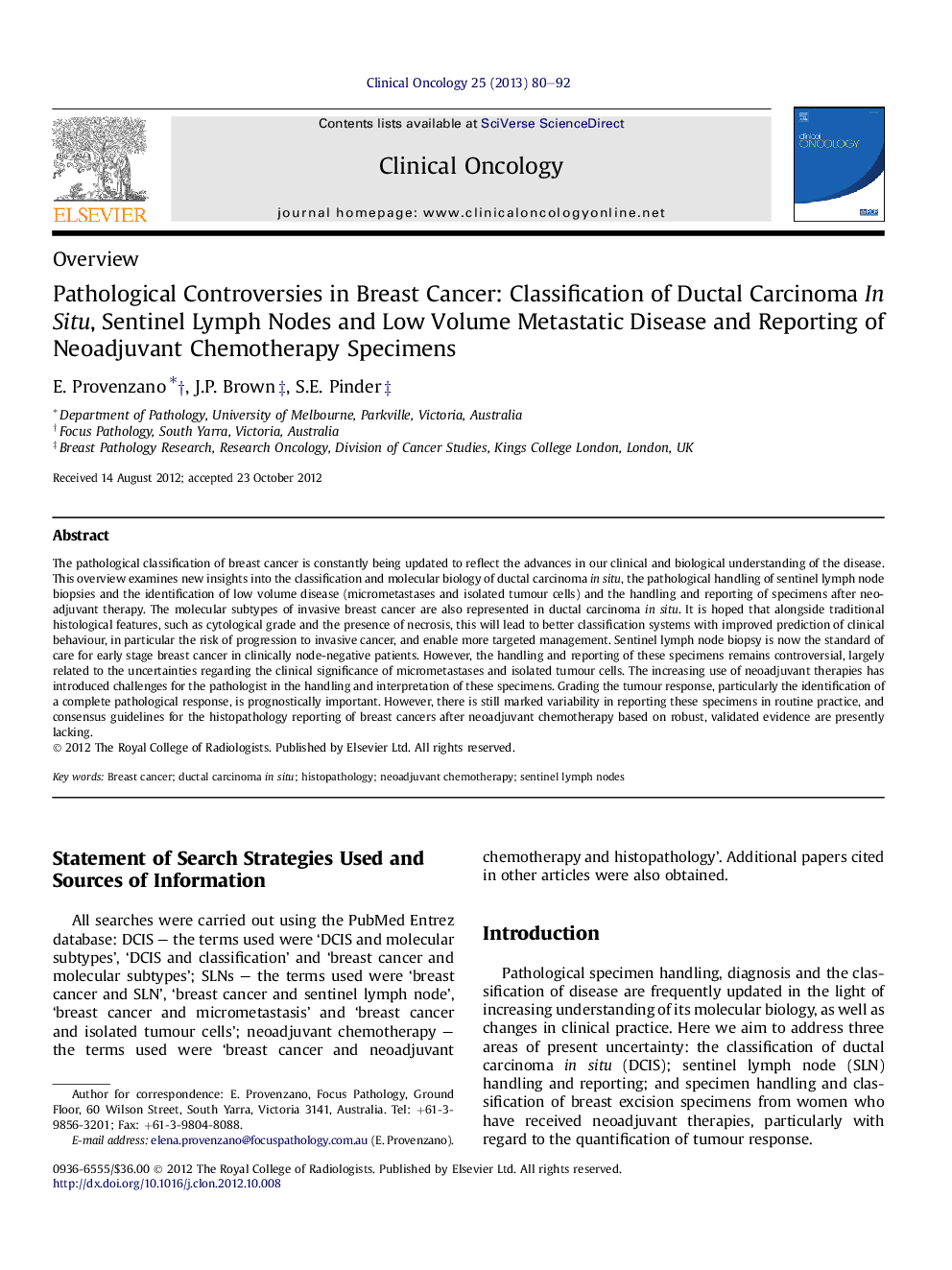| Article ID | Journal | Published Year | Pages | File Type |
|---|---|---|---|---|
| 5698487 | Clinical Oncology | 2013 | 13 Pages |
Abstract
The pathological classification of breast cancer is constantly being updated to reflect the advances in our clinical and biological understanding of the disease. This overview examines new insights into the classification and molecular biology of ductal carcinoma in situ, the pathological handling of sentinel lymph node biopsies and the identification of low volume disease (micrometastases and isolated tumour cells) and the handling and reporting of specimens after neoadjuvant therapy. The molecular subtypes of invasive breast cancer are also represented in ductal carcinoma in situ. It is hoped that alongside traditional histological features, such as cytological grade and the presence of necrosis, this will lead to better classification systems with improved prediction of clinical behaviour, in particular the risk of progression to invasive cancer, and enable more targeted management. Sentinel lymph node biopsy is now the standard of care for early stage breast cancer in clinically node-negative patients. However, the handling and reporting of these specimens remains controversial, largely related to the uncertainties regarding the clinical significance of micrometastases and isolated tumour cells. The increasing use of neoadjuvant therapies has introduced challenges for the pathologist in the handling and interpretation of these specimens. Grading the tumour response, particularly the identification of a complete pathological response, is prognostically important. However, there is still marked variability in reporting these specimens in routine practice, and consensus guidelines for the histopathology reporting of breast cancers after neoadjuvant chemotherapy based on robust, validated evidence are presently lacking.
Keywords
Related Topics
Health Sciences
Medicine and Dentistry
Oncology
Authors
E. Provenzano, J.P. Brown, S.E. Pinder,
